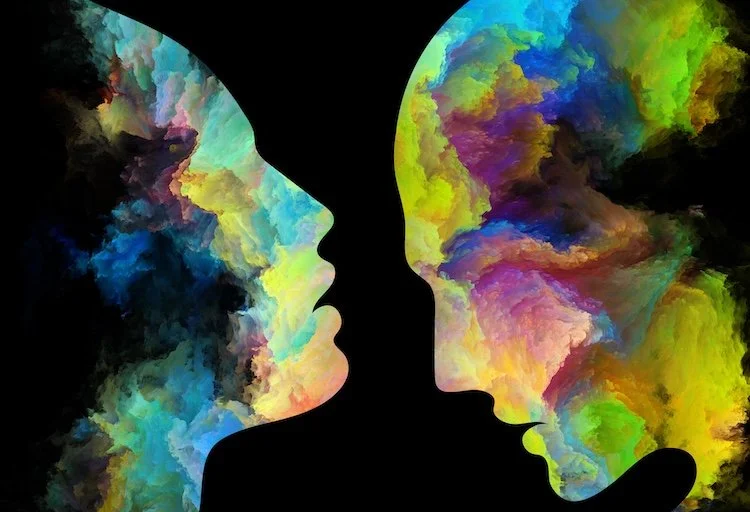The Entanglement of Hope and Fear in Couple Therapy
By Christopher Skeaff, LCSW, PhD
There is neither hope without fear nor fear without hope.
— Spinoza
We don’t have relationships to get our needs met, we have relationships to discover what our needs might be.
— Adam Phillips
Self-Actualization in Relationships
“What drew you to each other?” is one of the most important questions for a couple to explore in therapy. You can learn a great deal by listening carefully not only to what someone says in response – “his confidence and composure” or “she sought me out more than anyone ever has” or “his sense of community responsibility” – but also how they say it. With feeling? Which? How does the person acknowledge and express the feelings? Do they glance at their partner and soften? Do they bristle at the question? And so on…
From where couple therapists sit, a substantial body of clinical work and research suggests that the short, albeit generic, answer to the “what drew you” query is hope. A slightly longer answer runs as follows. We are drawn to our romantic partners out of a largely unconscious desire to satisfy incomplete developmental needs (e.g., to be admired for our accomplishments, or to feel like we belong with others like us), hoping that our self-actualization will be seen and supported while fearing that it will be given short shrift if not entirely thwarted.
If this kind of hope has a forward tilt to it, the attendant fear often has a backward orientation: my present-day worry that you, my romantic partner, won’t meet my needs is also a fear of repeating malattunements or relational traumas I experienced with my earliest attachment figures (parents, caregivers). Things are more complicated still. After all, you bring to the relationship longings (and fears) of your own, and these very hopes can evoke in me fears of dreaded repetitions just as my longings can rekindle old fears in you.
The conundrum, then, isn’t just that I can’t hope without fearing, it’s that my fears and hopes are bound up with yours in complex and mutually intensifying ways. As an illustration of how such dynamics can play out in a relationship and how they might be worked out in couple therapy, let’s consider the case of Ben and Elaine.*
The Entanglement of Hope and Fear
Ben and Elaine came to therapy with a shared concern that their relationship, a second marriage for each, might not withstand the fights they’d been having lately about seemingly everything. When asked to provide an example, they recounted a dispute over a family vacation home that Ben had inherited many years ago. For Ben, the vacation home represented the place and times in his early life when he felt most connected with his parents, who were otherwise rarely so present or relaxed. During his divorce, he’d fought desperately to keep the home. Elaine, for her part, worried more about their finances, and she regarded the property as an unnecessary luxury that they hardly used. Selling the vacation house, she noted, would enable them to remodel the home they lived in year-round and to pay for a portion of her oldest daughter’s wedding.
In an initial step, their therapist, Dr. R, sought to identify Ben and Elaine’s respective longings and to conceptualize how these aspirations seemed to be triggering each other’s fears. Already in the first session, the couple had provided ample material on this score. As Ben saw it, Elaine would never have dreamed of asking him to sell the property if she really understood him. He was hurt and shocked at the prospect that she might not truly “get him.” After all, he was first drawn to Elaine because, more than anyone he’d known, she had affirmed him for who he was – a welcome change from his childhood where Ben felt profoundly unseen, accepted by his parents only so long as he presented as the good and loyal son they needed him to be.
From Elaine’s vantage point, Ben exhibited uncharacteristically poor judgment with his sentimental attachment to the summer home and a stubborn unwillingness to heed her ideas. She felt frightened, rebuffed, and in the grips of a dreaded repetition. Having been raised by alcoholic parents prone to “pipe dreams” – what she called her parents’ empty promises and delusions – Ben’s nostalgia for his happy place stirred in Elaine old fears of feeling unloved and unsafe.
Dr. R pointed out how, for Ben, Elaine’s failure to affirm his experience felt so out of the ordinary as to feel annihilating. And Elaine’s negative response to Ben, in turn, followed quite seamlessly from her feeling atypically unprotected by him. Crucially, the therapist added, these malattunements had become “circularly causal,” in that the more each partner pressed the other for their longed-for emotional need, be it affirmation or protection, the more each elicited core recurring fears in the other. Ben and Elaine’s painful deadlock was, Dr. R underscored, better approached as a system conflict (“we each contributed something to this vicious cycle”) than as a linear one (“you did this to me” or “I did this to you”).
Exploring Perspectives and Their Provenance
During the introductory sessions, Dr. R managed to attune to each partner’s experience while also illuminating the circular dynamic that plagued their relationship. Ben and Elaine each felt some initial relief and renewed hope, as a result. Like most couples, they continued in the short run to see each other through fear-inflected lenses, but now with the added hope that they might at last be understood – by the therapist, at least.
It bears emphasizing that Ben and Elaine felt seen by Dr. R, not because the therapist adopted the posture of impartial arbiter, but rather because Dr. R engaged them from a place of equal empathic immersion, offering comments that exhibited a felt sense of what it was like for each in their own way to have some key aspiration disappointed. In this manner, Dr. R modeled for the couple a certain “perspectival realism,” i.e., an acknowledgement that each of us is inescapably an interpreter of reality, disposed to view others and ourselves via our idiosyncratic frames of reference. By moving back and forth between Ben’s and Elaine’s perspectives, resonating and empathizing with both in their uniqueness, Dr. R was also recruiting each partner to encounter the other’s experience with greater sensitivity and generosity.
In this regard, Dr. R underscored how each partner’s negative reaction to the other made sense given its provenance in the developmental context of his or her relational history of thwarted hopes and malattunements. While the major developmental ruptures in Ben’s and Elaine’s upbringing were evident from the very first consultation, in subsequent sessions Dr. R helped the couple to probe deeper into their pasts so as to explore why their unique sensitivities (feared repetitions) were organized in their specific ways. As much as this work enhanced the couple’s grasp of each other’s fears, it also enabled Ben and Elaine to appreciate anew their hopes for the relationship – that is, why and how each was drawn to the other out of a longing for continued growth and self-actualization.
*This is a fictional composite case drawn from the work of Philip A. Ringstrom, PhD, PsyD
Reaching out for support is a sign of strength — and commitment.
If you’re interested in learning more about couples therapy or our other psychotherapy services, please contact us by submitting this form, or by phone at 847-729-3034. We’ll be happy to answer any questions you might have.




